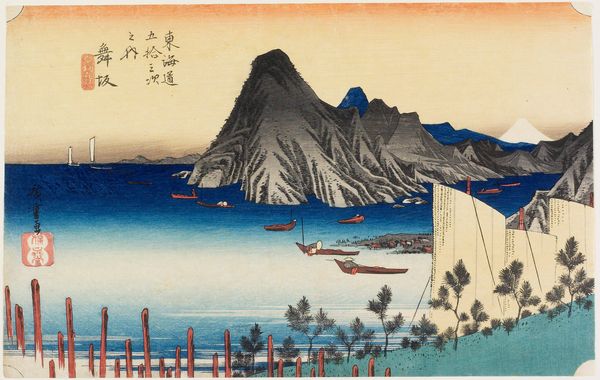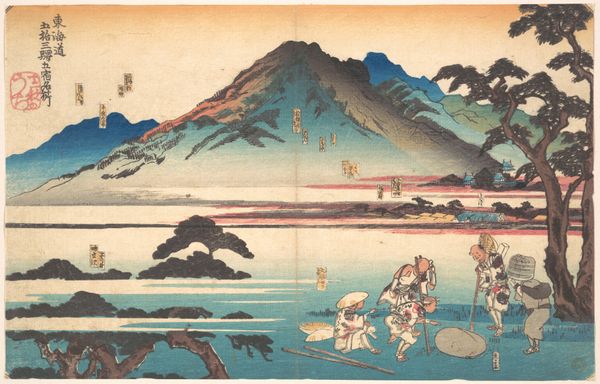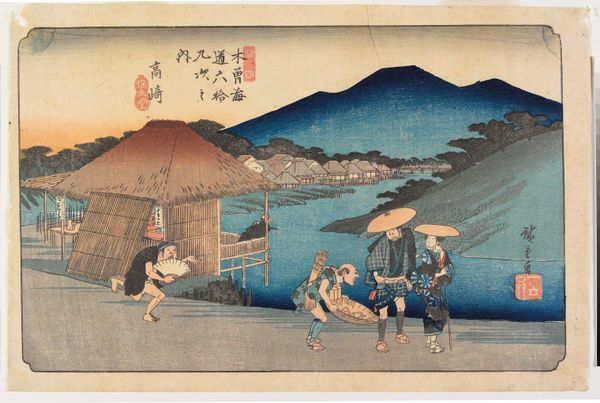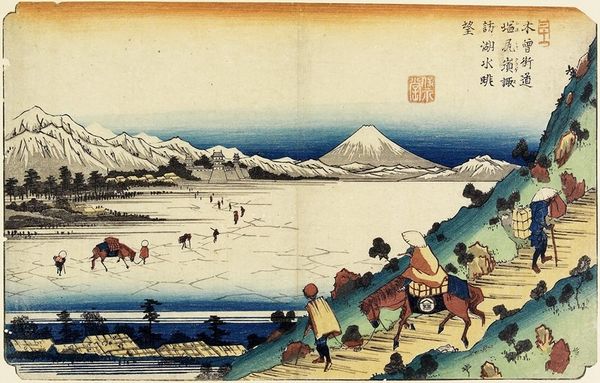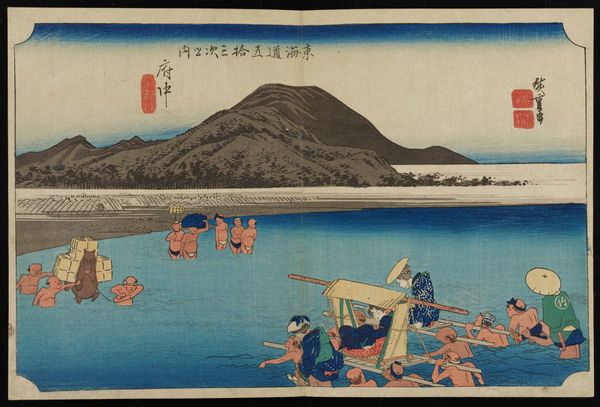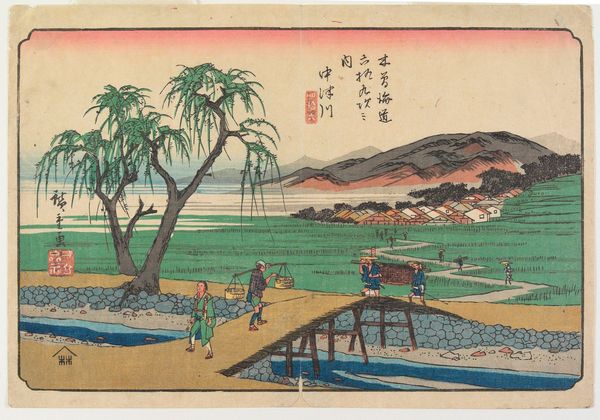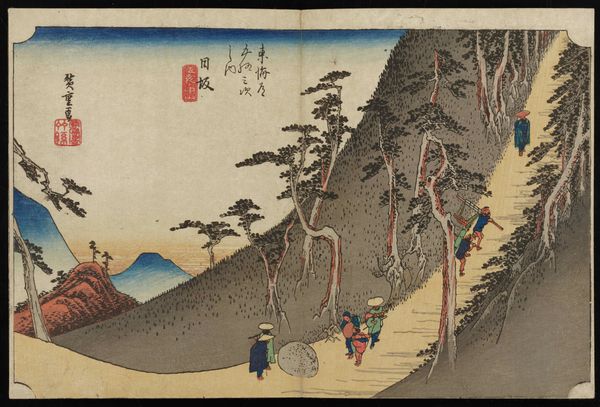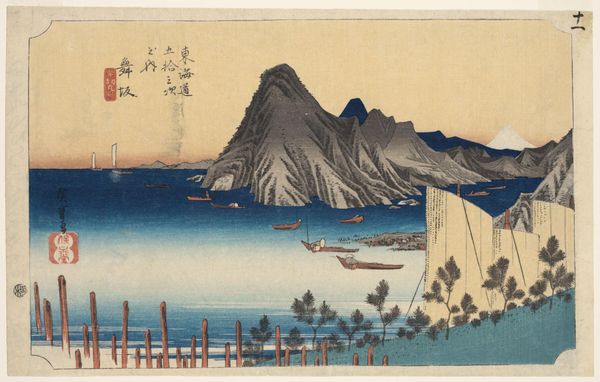
Akasaka, Fujikawa, Okazaki, Chiryu, and Narumi, from the series "Famous Places on the Fifty-three Stations of the Tokaido, Five Stations (Tokaido gojusan eki goshuku meisho)" c. 1830 - 1835
0:00
0:00
print, woodblock-print, woodcut
#
water colours
# print
#
asian-art
#
landscape
#
ukiyo-e
#
japan
#
woodblock-print
#
woodcut
#
orientalism
Dimensions: 25.1 × 37.6 cm (9 7/8 × 14 13/16 in.)
Copyright: Public Domain
Editor: This is a woodblock print by Utagawa Kuniyoshi, from around 1830-1835, titled "Akasaka, Fujikawa, Okazaki, Chiryu, and Narumi," part of the series "Famous Places on the Fifty-three Stations of the Tokaido." The materiality of this piece feels central—I'm fascinated by the artist's engagement with this medium to portray laborers transporting what looks like paper. What catches your eye in terms of its historical production and distribution? Curator: What strikes me is the intersection of landscape and the everyday labor embedded in its creation. The series focuses on the Tokaido Road, a crucial trade route, but Kuniyoshi foregrounds not just the picturesque views but the workers and materials that sustain that travel. The laborers carrying what are likely bundles of paper or textiles emphasize the commerce that fuels the area. Editor: So, you are thinking about the consumption aspect; the work illustrates both labor and the raw material used in the print? Curator: Precisely! This work draws attention to its means of production. Woodblock printing relies on paper, and seeing laborers carrying similar-looking bundles collapses the distance between the art object and the physical labor required for both the scene it depicts and its own material existence. This print is essentially commenting on itself and its position within a network of material production. What about those swaths of blue-patterned cloth? Editor: They’re gorgeous, really visually striking, but placed so they're almost blocking our view of the landscape behind. I’m now also questioning if those textiles relate to local manufacture. The composition seems very intentional in emphasizing the material element of production versus a purely romanticized view. Curator: Exactly, the strategic placement of these cloth pieces highlights a critique of mere aestheticism. Kuniyoshi subverts expectations, turning the landscape tradition into a commentary on the social conditions of production. This piece isn't just about pretty views. Editor: This reframing of landscape through the lens of material production offers such a different perspective on the artist's choices! Curator: And on our role as viewers, complicit in the cycle of consumption represented here.
Comments
No comments
Be the first to comment and join the conversation on the ultimate creative platform.




